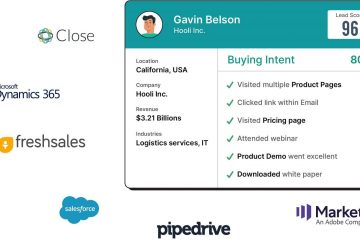What is Strategic Reporting? Definition, Need, & Best Practices
When you attend leadership meetings, you might face questions like: Where are we on this? What went well this quarter? How much revenue did we make? These questions can throw you off your track and leave you scrambling for numbers from your notes. Keeping all this data at the tip of their hands may be challenging, especially if you manage multiple teams. A strategic report can help you out here.
There may be hundreds of scattered data and reports generated across teams daily in your organization. But all this data, when consumed simultaneously, without context, can be overwhelming and chaotic.
Strategic reporting aims to pick the correct data on a routine basis and streamline this information in a bite-sized/consumable manner. This helps with more extensive decision-making and goal setting.
What is Strategic Reporting?
A strategic report highlights business performance over a certain period – monthly, quarterly, or annually.
Strategic reporting can help:
- Indicate the current state of your business
- Aid in goal-setting for the future
- Make data-backed decisions

Internal Strategic Report Vs. External Strategic Report
You can create a strategic report for internal or external purposes. Internal reports are created for leadership to track progress in a given period and take corrective/future measures. It may include information on mergers, acquisitions, sales, marketing, and financial performance. It helps leadership with decision-making and future goals.
An external report is mostly created by government departments, agencies, public companies, and committees to be more transparent about its functioning and build public trust.
Why Do B2B Businesses Need Strategic Reporting?
A strategic report can help a B2B business in the following ways:
- Understand progress made across departments: Often, your employees work in silos and need a cohesive platform that puts together all the scattered data. A strategic report can help put together the complete picture of progress made by all departments and help with decision-making. This is especially true for RevOps where sales and marketing teams need to work together to reach their desired revenue goals. Or, Product-led Growth (PLG), where marketing and product teams need to work together.
- Highlight achievements: Good work often gets unnoticed with an overload of information. Strategic reporting ensures periodic data collection and presentation that ensures that the highs and the lows are highlighted.
- Spot areas of improvement: Which deals are rotting? Why are some campaigns not bringing in leads, while others do? Strategic reporting helps spot departments and initiatives that are underperforming.
- Take corrective measures: Once you have identified areas that need improvement, you will also have all the information you need to take remedial measures
- Spot trends in the industry: A strategic report is not just an internal report. It also highlights market and business trends for each department. This ensures that all the employees are up to speed about industry progress and competition, so you can be in line with industry progress and prepare for the future
- Get insights on business performance: Collecting information across departments gives insights into the business’s overall health. It gets easier to forecast sales and predict revenue
What Should a Strategic Report Include?
You can create strategic reports before the goal or KPI setting process commences. Without these goals, data is just numbers. So depending on the type of goals your business or your department aims to achieve, the strategic report should carry data corresponding to that.
You can keep an eye on hundreds of metrics when running a business. Sales, marketing, and finance teams all have their list of KPIs. But depending on the goal that the strategic report seeks to address, those relevant metrics can be pulled together to address progress, outcomes, and performance
The structure of your strategic report can vary, depending on the kind of visualization. It can take the shape of a spreadsheet, presentation, or even a printed dossier (in case of an external document).
Once the goals are set, the strategic report may consist of the following broad areas:
- The objective of the report
- Methods used to study data
- Company KPIs
- Team/Individual KPIs
- Data charts
- Appended explanations
- Areas of improvement
- Way forward with recommendations
- Conclusion
Various software for data collection and analysis can pull together information like sales metrics, marketing metrics, expenses, and other financial declarations. They can also be automated to collect internal survey results and interview transcripts.
Information can also be presented in a consumable manner like pie charts, graphs, and other visual representations that different audiences easily comprehend. You can even have a template that can be implemented for your company – so the format can be replicated across your company without error.
3 Strategic Reporting Examples
1. B2B Marketing Strategic Report
For instance, in a B2B SaaS business, a marketing manager would ideally track the following metrics for strategic reporting:
- Signups
- Conversion rate
- Traffic to Website
- Source of leads
- MQL to SQL conversion rate
Tracking a metric like visitor to lead conversion by source can help the manager identify which source (was it emails, landing pages, web forms?) worked best in the previous quarter. It also gives direction on what new content/change caused this sure in leads, how many signups it resulted in, and how it can be replicated or improved in the future.
A proper attribution software helps you acquire and leverage this data to generate reports and tie campaigns to revenue. Salespanel, for example, helps you generate reports of your B2B campaigns and connect them to your entire customer journey. This means you know which campaigns and channels your leads came from, which touchpoints they engaged with, how many of your visitors converted into leads and how many leads converted into MQLs and then SQLs and ultimately purchased.
2. Real Estate Strategic Report
Say you are a sales manager in the real estate industry and you need to put together a quarterly strategic report for your manager, then some of the metrics that can help highlight your team’s performance include:
- Cost per lead
- Average close rate
- Sold homes per available inventory ratio
- Average commission per salesperson
You could include:
- Data visualizations that help you track leads by source.
- Cost per lead.
- Commissions per sales agent
- This gives your leadership a bird’s eye view of the status of all the real estate deals for the quarter.
3. Project Management Strategic Report
This could mean any project handled by any department in your company. This strategic report helps keep track of the progress of projects, monitor deadlines and any overdue.
Essential metrics you can track in this strategic report include:
- Projects in pipeline
- Deadlines for the projects
- Tasks overdue by project
- Completed tasks
The different views allow you to track a specific project or people on your team, monitor their performance, and always know who you can assign with new tasks or projects. Creating a project management strategic report is one of the key skills, according to project management knowledge areas (PMBOK).
4 Best Practices for Strategic Reporting
1. Whiteboard your Ideas
Before you create a full-fledged strategic report, bring in all the relevant leadership and team members too and get suggestions on KPIs – What should be the best metrics that are important for the growth of the business? How can this particular team contribute to that success?

The goals may be relevant to a particular team, or overall business too:
- Increase net sales by 10% every quarter
- Reduce lead to customer cycle
- Reduce bounce rate by 10%
- Track operational costs
2. Highlight Obstacles
What challenges did your team face and how did they overcome them? For example, your team notices that there are a lot of onboarding abandonments. This has led to a drop in sales by 15%. So your marketing team puts together an email nurture campaign that targets these leads, offering them a discount and encouraging them to view a demo before onboarding. This probably helped your team mitigate the issue.
How they managed to increase sales can be mentioned in the strategic report, which can be replicated across different departments and used for future reference.
3. Suggest a Course of Action
Strategic reporting does not only consist of problem-finding but also includes insights and suggestions on the way forward.
Include recommendations and suggestions on how your strategy for each team can be improved so the organization can reach more goals faster.
The way forward, when clearly stated, simplifies the tasks and responsibilities for different teams. Different teams can start implementing changes right away to course-correct with a clear, immediate goal in mind. Be sure to include:
- Deadlines
- Tools and technology needed
- Responsibilities
4. Automate Data Collection
Once a particular format has worked for a team or all your teams, set a template that can be replicated for all teams. Ensure that data is collected at regular intervals to fill up these templates so there is no scrambling at the last minute. Automate your data collection by:
- Creating templates that can be used uniformly across departments
- Setting up workflows that create reports with all the necessary data
- Creating dashboards to improve visibility into the collected data
Now that you are aware of what strategic reporting is, best practices, and data collection methods, you can get started with creating strategic reports for your organization.
Sell more, understand your customers’ journey for free!
Sales and Marketing teams spend millions of dollars to bring visitors to your website. But do you track your customer’s journey? Do you know who buys and why?
Around 8% of your website traffic will sign up on your lead forms. What happens to the other 92% of your traffic? Can you identify your visiting accounts? Can you engage and retarget your qualified visitors even if they are not identified?



